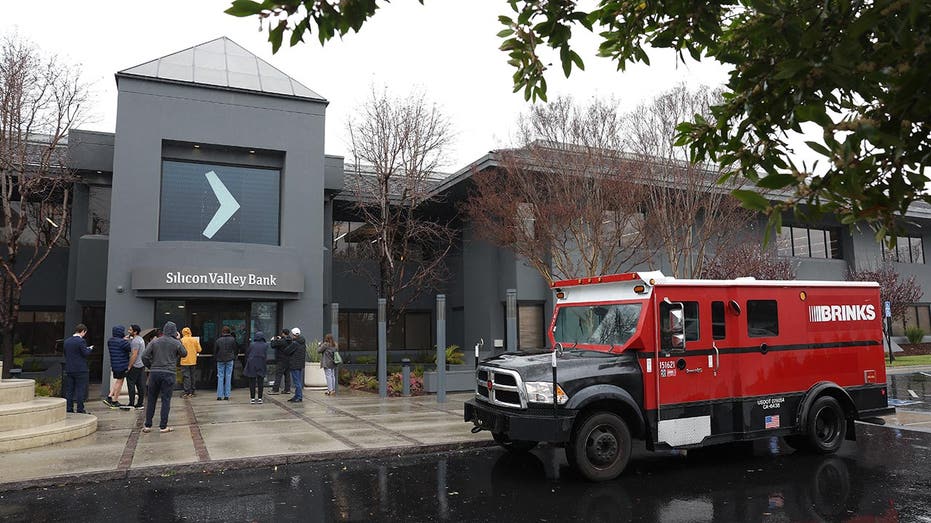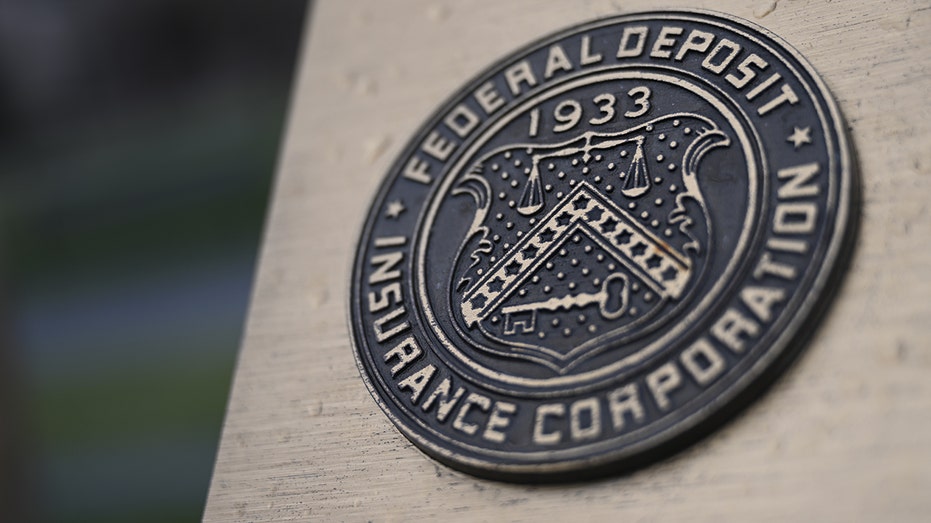How the last-ditch effort to save Silicon Valley Bank failed
SVB couldn’t get loans, and withdrawals accelerated before seizure
SVB's management, board caused collapse with 'irresponsible acts': Noor Menai
Fox News contributor Robert Wolf and CTBC Bank USA president and CEO Noor Menai discuss the stability of the U.S. economy and the importance of regional banks on 'The Claman Countdown.'
Depositors were draining their accounts via smartphone apps and telling their startup networks to do the same. But inside Silicon Valley Bank, executives were trying to navigate the U.S. banking system’s creaky apparatus for emergency lending and to persuade its custodian bank to stay open late to handle a multibillion-dollar transfer.
The depositors won the race. Regulators shut down SVB around the time a multibillion-dollar cash infusion was set to arrive, marking the second-largest bank failure in U.S. history.
Some people working on the rescue learned about the shutdown from a news release issued by bank regulators, though it was already increasingly clear that SVB’s weak balance sheet and fickle depositors made a rescue nearly impossible.

People gather outside of the Silicon Valley Bank (SVB) headquarters in Santa Clara, California, U.S. March 10, 2023. (REUTERS/Nathan Frandino / Fox News)
Inside the bank, employees are now replaying SVB’s last hours. "This team was on a path to reconstruct the balance sheet the right way," an SVB employee said Friday during a meeting of the bank’s treasury department, according to a recording heard by The Wall Street Journal. "Time and circumstances didn’t allow us to do that."
A TICK-TOCK OF THE US BANKING CRISIS
Withdrawals accelerated late in the morning on the West Coast on Thursday, March 9. Executives paced the office on phone calls as employees watched and texted details to each other.
That is when SVB, at the time controlled by SVB Financial Group started looking for help, only to run into the U.S.’s bank-funding system, which wasn’t built for speed. First it turned to the San Francisco Federal Home Loan Bank, asking for a $20 billion loan. The FHLB system is a nearly 100-year-old network of privately capitalized, government-sponsored banks meant to support mortgage lending.
The FHLBs play another role. Banks leave collateral such as mortgages with FHLBs in exchange for credit lines. To advance the money, the FHLBs have to issue debt, which means they can generally only lend when the market is open.

A Brinks armored truck sits parked in front of the shuttered Silicon Valley Bank (SVB) headquarters on March 10, 2023 in Santa Clara, California. (Justin Sullivan/Getty Images / Getty Images)
It was already midday in California, and SVB’s unusually large request came too late for the San Francisco FHLB to process that day, people familiar with the matter said. It offered SVB a smaller loan but the bank turned that down, the people said.
SVB turned to plan B, asking the San Francisco FHLB to move $20 billion of collateral to the Federal Reserve’s discount window, where it could get emergency funding, the people said. SVB had roughly $20 billion available for financing at the San Francisco FHLB, according to the people familiar with the matter.
FED OFFICIALS MEET IN SHADOW OF BANKING CRISIS, HIGH INFLATION
The bank hit another roadblock. The transfer required procedural steps. SVB had outstanding loans at the San Francisco FHLB, which had to determine how much collateral it needed to hold, the people familiar with the matter said.
SVB also tried to get $20 billion in assets to the Fed through Bank of New York Mellon Corp., one of its custodial banks. SVB was too late—it had missed BNY Mellon’s daily cutoff for instructions for Fed transfers from custodial accounts.

Federal Deposit Insurance Corporation (FDIC) building is seen in Virginia, United States on March 17, 2023. (Celal Gunes/Anadolu Agency via Getty Images / Getty Images)
SVB’s then-chief executive, Greg Becker, called Robin Vince, CEO of BNY Mellon, to ask for an extension. BNY Mellon agreed to try. Over the next few hours, BNY Mellon worked with SVB and Fed officials in Washington and New York who are responsible for the securities wire and entered all of the transfers to the Fed.
The Fed needed a test trade to be run before the actual transfer could occur. That took time and the Fed didn’t extend its own daily deadline of 4 p.m. PT for collateral transfers to help SVB. Time ran out on the bankers and SVB couldn’t get the money that day.
SENATE BANKING COMMITTEE ANNOUNCES HEARING IN SILICON VALLEY BANK COLLAPSE
Customers withdrew $42 billion from SVB on March 9. The bank had a negative cash balance of about $1 billion as of the close of business that day.
The next day, the BNY transfer to the Fed went through, potentially allowing SVB to borrow from the central bank. According to people familiar with the matter, the San Francisco FHLB was still working on its transfer when executives saw an announcement from the Federal Deposit Insurance Corp.: The regulator had taken over SVB.
| Ticker | Security | Last | Change | Change % |
|---|---|---|---|---|
| BK | THE BANK OF NEW YORK MELLON CORP. | 87.10 | +1.19 | +1.39% |
"We were well under way with the transfer of collateral and were waiting for a call from the Federal Reserve and SVB," a spokesperson for the San Francisco FHLB said. "And while we were waiting for a call, the FDIC took over SVB."
Some people at SVB remain angry about the takeover and frustrated that a possible rescue took so long. They say the bank was seized just before it got a lifeline from the Fed or a buyer, but they also acknowledge that the scale of withdrawals doomed the bank.
CLICK HERE TO GET THE FOX BUSINESS APP
Elizabeth Smith, a spokesperson for the California Department of Financial Protection and Innovation, said the state coordinated with federal regulators and seized the bank because it was insolvent. "The bank was operating in an unsafe manner due to its financial condition," she said.
—Ben Foldy and Rachel Louise Ensign contributed to this article.




















